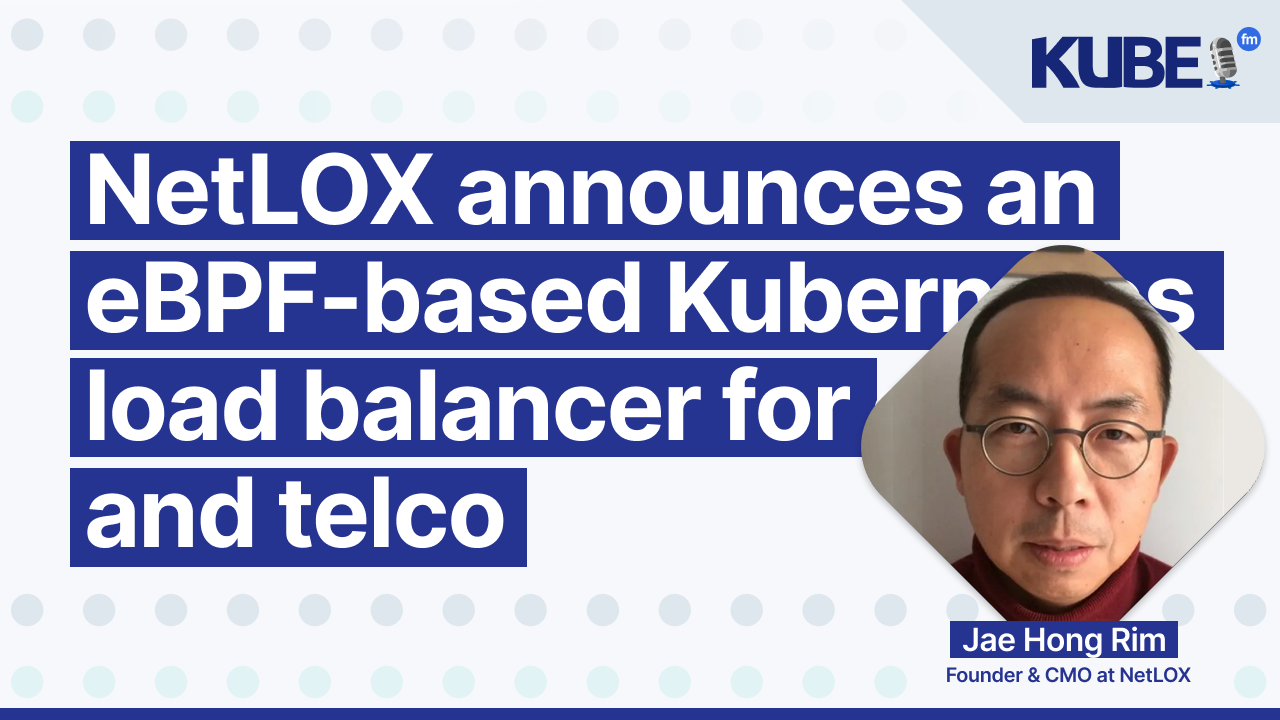NetLOX announces an eBPF-based Kubernetes load balancer for edge and telco
Dec 24, 2024
LoxiLB, a cloud-native load balancer powered by eBPF, has recently achieved a significant milestone by being accepted into the CNCF as a sandbox project.
This innovative solution stands out in the crowded load balancer space by combining both Layer 4 and Layer 7 capabilities with exceptional performance characteristics for Kubernetes environments.
What makes LoxiLB particularly compelling is its unique optimization for edge computing and telco use cases, supporting specialized protocols like GTP and SCTP that are crucial for modern 5G deployments.
The project solves critical performance bottlenecks by providing high-throughput load balancing and can replace kube-proxy for more efficient traffic handling in large-scale deployments.
Transcription
Bart: We should have use Pod Topology Spread Constraints to solve this.
Jae Hong: I'm at NetLOX. I'm a co-founder of NetLOX and I'm responsible for the marketing and sales based in Korea.
Bart: What do you want to share today?
Jae Hong: We are known as the next-generation load balancer in a Kubernetes environment, capable of doing much more than what you think. LoxiLB is an open-source, cloud-native load balancer based on Golang eBPF, with the goal of achieving cross-compatibility across a wide range of on-premise, public cloud, or hybrid Kubernetes environments. LoxiLB is being developed to support the adoption of cloud-native technology in telco, mobility, and edge computing. Kubernetes defines many service structures, such as cluster, NodePort, LoadBalancer Service, and ingress, for pod-to-pod, pod-to-service, and outside-world-to-service communications. All these services are provided by load balancer proxies operating at layer 4 and layer 7. Since Kubernetes is highly modular, these services can be provided by different software, and a service-type load balancer is usually provided by public cloud providers as a managed entity. However, for on-prem and self-managed clusters, there are only a few good options available. Even for provider-managed Kubernetes, like EKS, many users want to bring their own load balancer to clusters running everywhere. Additionally, telco 5G and edge services introduce unique challenges due to the variety of exotic protocols involved, such as GTP and SCTP, making seamless integration particularly challenging. LoxiLB provides a service-type load balancer as its main use case and can be run in-cluster or external to the cluster. As per user need, LoxiLB works as an L4 load balancer service proxy by default. Although L4 load balancing provides great performance and functionality, an equally prominent layer 7 load balancer is also necessary in Kubernetes for various use cases. LoxiLB also supports layer 7 load balancing in the form of a Kubernetes Ingress implementation, which is enhanced with eBPF XDP helpers. This provides benefits for users who need L4 and L7 load balancing under the same hood.
Bart: What problem does LoxiLB solve?
Jae Hong: LoxiLB addresses several key challenges in cloud-native edge and telecommunications environments by providing an efficient, scalable load balancing solution. For example, traditional load balancers often struggle with latency in high-traffic situations. LoxiLB uses eBPF for packet processing, which enables it to handle a high volume of data traffic at low latency. This is essential for applications requiring real-time responses. Another example is that kube-proxy is used to manage network traffic between services, but it can become a bottleneck as the cluster scales. LoxiLB can replace kube-proxy to provide more efficient traffic handling and reduce complexity. Its cluster-wide mesh networking support also helps to resolve common Kubernetes networking issues, providing faster and more scalable service delivery. In the telecom vertical, LoxiLB is optimized to support special protocols like SCTP or telecom signaling and multi-homing for network redundancy. It supports a range of protocols and offers features like multi-homing and NAT64, NAT66, making it highly adaptable to mixed protocol environments common in telecom networks. This ensures reliable connectivity for edge deployments. By addressing these challenges, LoxiLB offers a robust solution for enterprises looking to optimize performance, reduce latency, and maintain flexibility in complex cloud-native and edge environments.
Bart: Is LoxiLB open source and part of the CNCF Cloud Native Landscape?
Jae Hong: LoxiLB was accepted as a sandbox project by the CNCF in August this year. And so it is an eBPF-based cloud-native load balancer designed to support Kubernetes, Edge IoT, and telco applications. LoxiLB was added to the CNCF Cloud Native Landscape following the acceptance, aligning it with other open-source projects within CNCF that support cloud-native infrastructure. The project provides features like layer 4 and layer 7 load balancing, Kubernetes ingress capabilities, and kube-proxy replacement options tailored for high-performance, flexible, and cloud-native environments.
Bart: What differentiates LoxiLB and NetLOX from the competition?
Jae Hong: LoxiLB sets itself apart from other load balancers through its combination of high-performance eBPF-based packet processing, flexible deployment options, and specific optimization for edge and telco use cases. LoxiLB provides both Layer 7 protocol and Layer 4 and 7 load balancing capabilities. The Layer 4 functionality supports high throughput, while the Layer 7 functionality includes support for Kubernetes ingress controllers, which is beneficial for Kubernetes users who need more granular control over application traffic.

